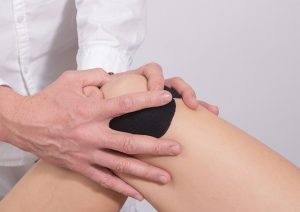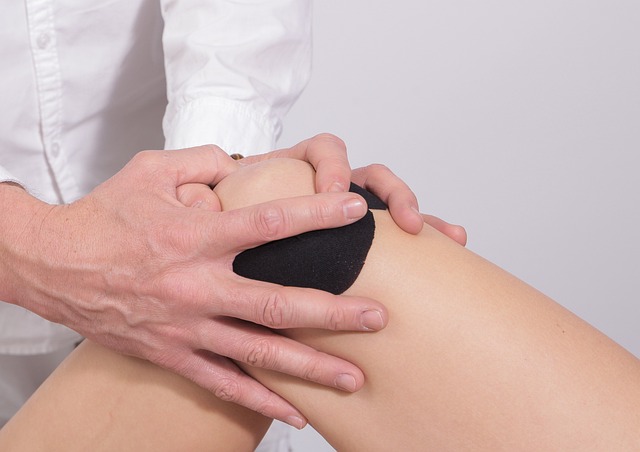Knee pain is a common complaint among people of all ages, and it can have a significant impact on physical activity. Whether it’s caused by injury, arthritis, or other factors, knee pain can make it difficult to perform everyday tasks and participate in sports or other activities. However, there are ways to manage knee pain and stay active, which can improve overall health and well-being.
What Causes Knee Pain?
 There are many potential causes of knee pain, including injury, overuse, and arthritis. Injuries such as sprains, strains, and tears can damage the ligaments and tendons around the knee joint. Overuse injuries can occur from repetitive motions or activities that put stress on the knee joint. Arthritis is a common cause of knee pain in older adults, as the cartilage in the joint wears down over time.
There are many potential causes of knee pain, including injury, overuse, and arthritis. Injuries such as sprains, strains, and tears can damage the ligaments and tendons around the knee joint. Overuse injuries can occur from repetitive motions or activities that put stress on the knee joint. Arthritis is a common cause of knee pain in older adults, as the cartilage in the joint wears down over time.
How to Identify Knee Pain
Symptoms of knee pain can vary depending on the cause and severity of the condition. Acute knee pain is typically sudden and severe, often caused by an injury or trauma to the knee joint. Chronic knee pain is ongoing and may be caused by conditions such as arthritis or overuse injuries. Symptoms of knee pain may include swelling, stiffness, weakness, instability, and difficulty walking or standing.
The Benefits of Staying Active Despite Knee Pain
Despite the challenges that come with knee pain, staying active is important for overall health and well-being. Regular exercise can help improve cardiovascular health, strengthen muscles around the knee joint, and reduce inflammation throughout the body. In fact, staying active can actually help alleviate knee pain by improving flexibility and reducing stiffness in the joint.
Tips for Managing Knee Pain
There are several lifestyle changes that can help reduce knee pain and improve mobility. Maintaining a healthy weight can reduce stress on the knees, while wearing proper footwear can provide support and cushioning during physical activity. Braces and other supportive devices can also help stabilize the knee joint and reduce pain. Additionally, avoiding high-impact activities and incorporating low-impact exercises such as swimming or cycling can help reduce stress on the knees.
Exercises to Strengthen the Knees
Strengthening the muscles around the knee joint can help improve stability and reduce pain. Examples of exercises that can help strengthen the knees include squats, lunges, leg presses, and step-ups. These exercises should be performed with proper form and gradually increased in intensity over time.
Stretching Exercises to Reduce Knee Pain
Stretching can help improve flexibility and reduce stiffness in the knee joint. Specific stretches that can help alleviate knee pain include hamstring stretches, quad stretches, and calf stretches. These stretches should be performed regularly, both before and after physical activity.
The Role of Diet in Knee Pain
Certain foods and nutrients can impact knee health and inflammation throughout the body. Incorporating an anti-inflammatory diet rich in fruits, vegetables, whole grains, lean protein, and healthy fats can help reduce inflammation and improve overall health. Additionally, avoiding processed foods, sugary drinks, and excessive alcohol consumption can also help reduce inflammation.
When to Seek Medical Attention for Knee Pain
While many cases of knee pain can be managed with lifestyle changes and exercise, there are times when medical attention may be necessary. Signs that knee pain may require medical attention include swelling, instability, inability to bear weight on the affected leg, or a popping or grinding sensation in the knee joint. It’s important to seek medical attention if these symptoms occur or if knee pain persists despite lifestyle changes.
Taking Control of Your Knee Pain
Taking an active role in managing knee pain is important for improving quality of life. This may involve seeking professional help from a physical therapist or orthopedic specialist, making necessary lifestyle changes such as losing weight or wearing proper footwear, and incorporating exercises and stretches to improve knee strength and flexibility.
Knee pain can be a challenging condition to manage, but there are many ways to stay active and improve overall health and well-being. By incorporating lifestyle changes, exercises, and stretches, you can take control of your knee pain and improve their quality of life. It’s important to seek professional help when necessary and make necessary changes to reduce pain and improve mobility.








